 By Pepper Parr By Pepper Parr
BURLINGTON, ON.
January 11, 2014
Getting the horses into the gate is taking a bit of time. The Usual Suspects are not rushing to actually commit – other than the Mayor, none of the incumbents has marched down to the Clerk’s office to file nomination papers.
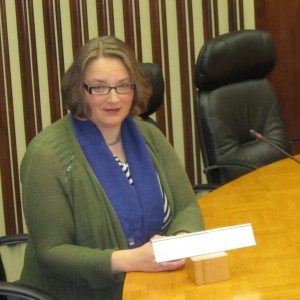 Is this a picture we are going to see frequently> Will there be a change in the name on the name plate at city council? There is clearly a race in ward 1 where two candidates have filed their papers; they now wait for the incumbent Rick Craven to file his papers. One total newcomer, Katherine Henshell and a solid Aldershot resident, Jason Boelhouwer, who thinks it is time for a change, have filed their papers.
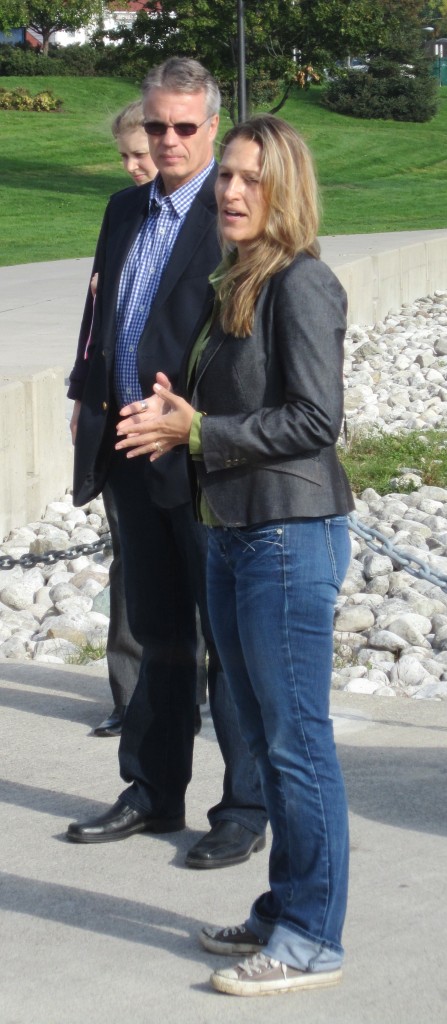 Often, whenever ward 1 Councillor Marianne Meed Ward appears at events with the Mayor she sounds more “mayoral” than the man who wears the chain of office. Ward 2 might be very quiet election night – there is every chance that incumbent Marianne Meed Ward will be acclaimed unless the hurt feelings within the developer community are big enough to have them find a name that can be printed on the ballot to run against Meed Ward.
It will be something to see Meed Ward sit out a campaign – she lives for the game, loves the play and the interaction. A side-lined Marianne Meed Ward is not a pretty picture. Trust her to find a way to insert herself into the election even if she is acclaimed; she could well use 2014 to begin her 2018 race for the office of Mayor.
That kind of thing happened in ward 1 when Jane McKenna took the bait an unhappy property owner put out and ran against Craven – only to be severely trounced. However, that did give her a bit of a profile and she took the bait a second time when Keith Strong came calling with the Tory nomination in his hand. This second run had a well-oiled machine behind McKenna and got her into office. It will take more than a well-oiled machine to keep her there come the next provincial election.
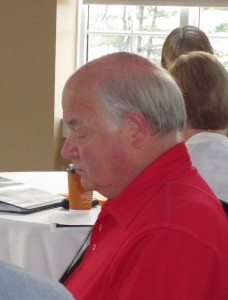 John Taylor, Dean of city Council clearly doesn’t believe in term limits. Ward 3 could be a cake walk for John Taylor – his profile is so high that it will take an exceptional candidate to overcome his name recognition. While Taylor has served the people north of the 407 well, he isn’t one of them and you have to live on one of those side roads to fully understand what rural life is.
For reasons this writer doesn’t understand the rural community has not been able to find one of their own to represent them. Ward 6, which has a large swath of land within its boundaries, is also represented by someone who lives in the suburban part of the city. Burlington’s city council, and the Regional Council as well, desperately needs someone who can speak for the rural folk and represent their interest and life style.
Ward 4 will offer the most interesting race. The incumbent is in trouble but he is redoubtable and is superb at the June to September campaign he runs where he cycles through every street in the ward which runs from Upper Middle Road, Appleby Line, Guelph Line down to the lake, and pours on his charm and bats the baby blues. They have worked for Jack Dennison in a number of his initiatives in his life. Don’t count him out.
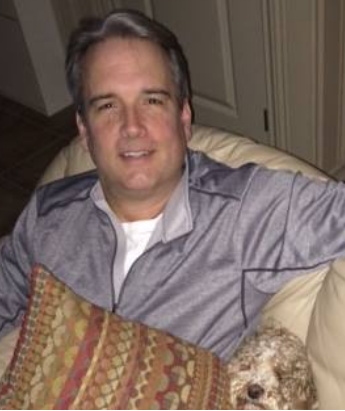 Brian Heagle – seen as a candidate for Ward 4. It is not the dog that wants your vote – could it it beat Brian were it to run? Brian Heagle will run again. Burlington will not be any better off should he win – and he did get within striking distance last time out. They were separated by 1184 votes with Dennison getting 5292. Had he worked a bit harder he could have taken the brass ring – but that’s the problem. Heagle doesn’t do the hard work – and changing his political stripes hasn’t helped him
AND, there is a dark horse out there, thinking it over and taking his time while he decides if elected office is a next step in An already successful career. If this horse is in the race don’t be totally surprised if you find him and Jack Dennison at your doorstep. It is not unusual for an incumbent to decide it is time to leave and do so on the highest note possible. Giving your blessing to a high quality candidate who could well go on to become Mayor in 2018 would add a little lustre to a damaged image in the ward. It might even get Dennison into the Roseland Community Organization.
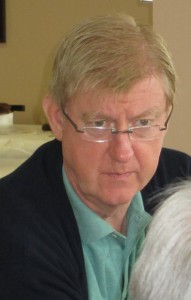 Intense to the point of making delegations uncomfortable ward 5 Councillor Paul Sharman does know how to drill down into the data and look for results. Ward 5 looks as if it is going to produce a flock of candidates. There will be at least three in the race this time with a couple of other potentials mulling it over. There were 9 candidates in 2006 and 7 in 2010. Incumbent Paul Sharman has his work cut out for him. If he can convince his community he has picked up some people skills and can deliver a bit more than parking spaces on the street and make a sound contribution during the budget debates and not throw everything off track the way he did with his 0% increase in the 2011 debates, he might prevail. The ward has a history of putting forward a number of candidates that often turns into a crap shoot with the tumbling of the dice rather than a clear decisive vote count determining who wins.
Ward 6 – another part of the city with significant rural geography but not all that much in the way of population north of 407, has an incumbent who needs to change the image that has emerged. The former Beauty Queen image doesn’t track anymore outside the die-hard Tory base.
 Is north Burlington ever going to get the kind of representation it needs and deserves? It is going to be up to that community to find a local candidate that can draw support from the people south of 407 down to Upper Middle Road. Sarah Harmer – where are you when we really need you? If a solid candidate emerges Blair Lancaster could be in serious trouble. There is however an opportunity for her to show that she is indeed much more than a pretty face with a pleasant smile. Serving as chair of the Development and Infrastructure Standing Committee gives Lancaster an opportunity to show she does have “cajones” and can deliver on the level ward 1 Councillor Rick Craven does as a committee chair. Only time will tell if she can pull it off. She does have the city’s best General Manager in place to guide and support her. If she does make it happen – there will be no stopping her. A strong performance as chair is essential for her to stay alive politically.
The race for the Chain of Office worn by Mayors is totally unknown. Mayor Goldring has filed his papers but other than that there is no sign or sense that he has done anything which kind of reflects his first term as Mayor. We would really like to see a better Mayor Goldring and believe it is in there – somewhere – it’s just not visible – yet.

 By Staff By Staff
BURLINGTON, ON
January 11, 2014
If the idea of short, short films – some not much longer than a television commercial, appeals to you Burlington’s first ever Short Film Festival might interest you.
The list of films, there are 12 of them being screened in a two sessions schedule on the same evening.
The evening, Friday January 17th , begins with a 6:00 pm reception at the Burlington Art Centre.
Session 1 is made up of six films which run from as short as 4 minutes to 16 minutes.
The line up is:
Promise – 8 minutes: Longing to be reunited with her dead husband a grieving widow visits his grave for one last goodbye when a phone call changes her life. Directed by Collin Chan & Johnny Chocolate
Wanderlust – 4.5 minutes: A young boy searches near and far for his purpose. Directed by Mike Martins
 Vanessa Crosbie Ramsay will present her 11 minute short film on the a day in a record store.
Allusion – 11 minutes: So many out-of-the-way things had happened lately that Alice had begun to think that things indeed were really impossible. “Allusion” is the story of a day in the life of a girl who works in a record store and the odd people who visit during the day. Directed by: Vanessa Crosbie Ramsay
New Domain – 11 minutes: A commentary on Generation Y relationships online. Directed by Andre Rehal
Wade’s World – 16 minutes: Wade faces the long awaited trials and tribulations of being an imaginary friend when his best friend, 29 year old Dan, falls in love. It ain’t easy being imaginary. – Directed by Matthew Yipchuck
Kids Town (Episode 5) – 12 minutes: 12-year-old Brian Russell is the new kid in town, again. As he navigates another set of unwritten rules of the school yard Brian finds himself tangled in the strings of small town politics when he clashes heads with the Mayor’s son, the local press owners youngest, and the Librarian’s pretty daughter. A family series as much for adults as their children, KID’S TOWN is about young love, friendship, small town civics, power struggles and the universal need to figure out one’s place in the world. – Directed by Mikelle Virey
The organizers scheduled the program to allow for break; a chance to mingle with people, meet some of the directors and decide which films should be award winners.
Session 2 opens with Tasha and Friends – 15 minutes: Local children’s show host, Tasha, decides to shut the show down. Her puppet co-stars, however, want to shut her down…permanently. Directed by Greg Kovacs
 Alfredo Salvatore Arcilesi director of For Clearer Skies. For Clearer Skies – 7 minutes: A man struggles to decide whether or not to pursue survival as his race nears extinction. Directed by Alfredo Salvatore Arcilesi
One More For the Road 17 minutes: A married couple go on a road trip to rekindle their marriage, leading to disastrous results. Directed by Navin Ramaswaran
4 – 11 minutes: Four alternative versions of one young man deal with various conflicts in their everyday life – all involve confronting someone about something that has been taken from him. Directed by Mike Chantaj, Sydney Cowper, RJ Kemp and Cameron Veitch
Yeah Rite – 6 minutes: An atheist and a blind priest perform their first exorcism. – Directed by Michael Penney
Shhh – 12 minutes: Shhh is a fantasy/horror short tale about a young boy, Guillermo, who uses his imagination to overcome his bully: a hair-eating monster. Tired of being scared, Guillermo eventually takes matters into his own hands. It’s only then that we realize the monster might not be as fictitious as one may have thought. Directed by Freddy Chavez Olmos, Shervin Shoghian
 The Burlington Short Film Festival plans to pay the directors for their participation. The Short Film festival organizers have committed to having every film producer getting paid and will announce the awards at the end of the program – then it is a short walk along Lakeshore to SB Prime (on Elgin across from the Queen’s Head) for the after performance party. A media release from Tottering Biped, part of the organizing group, said: “In a move that is a departure from major international Festivals such as TIFF (Toronto International Film Festival) where no fees are allocated to the films, the Tottering Biped Film Festival will be compensating Artists for their work.
Will the organizers of the event come up with a party that compares with what takes place at Cannes or Toronto’s TIFF? One never knows. A year ago even the idea of a film festival in Burlington would have been resulted in polite snickers but Burlington is changing and we are seeing a much different cultural community that wants to be recognized and at the table where cultural policy is determined.
A great party might be just the thing to make an impression.
Tickets, which include the pre-screening reception and after party, are available either in person at the Burlington Art Centre (905) 632-7796 or via paypal

 January 10, 2014 January 10, 2014
BURLINGTON, ON.
By Ray Rivers
The dealer in a wild-west game of poker was selected by the position of a buckhorn handled knife rotating in clockwise fashion after each hand. If a player didn’t want the responsibility of dealing, he’d pass the buck to the next player. Former US President Truman was given a sign to that effect, which he placed prominently on his desk. The buck stops here – meaning: responsibility will not be passed beyond this point.
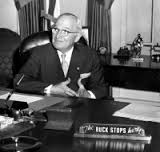 Former US President Harry Truman made sure everyone knew where the buck stopped. New Jersey Republican governor Christie is in the news. One of his staff had shut down a couple of lanes of traffic on a very busy bridge linking his state with New York. This was purely a political action aimed at punishing the mayor of a town at the base of the bridge, a democrat, who refused to endorse Christie. So Christie, a 2016 presidential hopeful, trumpeted that the buck stopped with him then passed it on, denying any responsibility for what his office had done, blaming his senior staff and then firing them.
Doesn’t that sound familiar? Stephen Harper claims he was unaware that his Prime Minister’s Office (PMO) was trying to influence the outcome of an audit into the expense claims of Senator Mike Duffy. Harper the micro-manager, who once told Parliament that he had personally reviewed and accepted the expense claims of Senator Pamela Wallin, orchestrated her and Duffy’s removal from the upper chamber for exactly that reason, both of whom had been his personal appointees. He then fired his chief of staff for trying to keep Duffy quiet and announced the matter closed.
In 2008, 23 people died and 57 others were sickened from eating listeria contaminated cold cuts prepared by Maple Leaf Foods. CEO Michael McCain was praised for his handling of the aftermath of this catastrophe. Maple Leaf is a huge company and this was clearly a mistake, an oversight, by plant staff and the inspectors. But 23 people died and he is still CEO. The federal agency responsible for food safety, CFIA, and its minister had commended McCain on his deportment during the crisis but shrugged-off any responsibility on their part – they just passed the buck to the plant operators.
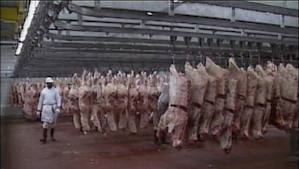 Hogs slaughtered and ready for butchering. Perhaps that lack of accountability helps to explain why some four years later CFIA inspectors turned a blind eye at Alberta’s XL Meats. This plant which processes 35% of Canada’s beef had a deregulated inspection system but the company’s own inspectors ignored the deadly e-coli bacteria contaminating the meat tenderizing machines. Fortunately only 18 unwary customers were poisoned by the e-coli bacteria. In a system without consequences why expect things to change?
It was also e-coli bacteria in the water supply, which had killed 7 people and sickened half of Walkerton’s 5000 residents in 2000. The town’s water plant operators received criminal penalties, but the Mayor and his council committee just passed the buck. And the Harris government also passed the buck after having deregulated provincial water testing without considering ways of preventing this kind of incident.
And on the topic of deregulation, the disaster at Lac-Mégantic last year involved a shifty railroad entrepreneur, given a special exemption by the feds to run his train with only one operator. Unsurprisingly, the workload was too much for a single operator who didn’t or couldn’t set all of the train’s brakes, allowing the train to escape and destroy the downtown, killing just under 50 people.
The federal transportation safety agency is trying to shift the blame for this incident to other factors, which they should have known about – the explosive trend of moving petroleum by rail, and the documented inferior tank car design being used. This week there was another fiery train derailment, in New Brunswick. Oil shipments by rail in Canada have leapt from 529 cars in 2005 to 160,000 cars in 2013, but the number of dangerous goods inspectors has remained relatively constant. The ratio of inspectors to oil carloads over the period has crashed from 1:14 to 1:4000. Is there any wonder we are seeing this?
China experienced a tragic health event in 2008 when its state-owned Sanlu Group poured melamine (a product associated with kitchen counters) into infant formula to artificially raise protein levels while they watered down milk in the product. After several babies died and hundreds of thousands were sickened (imported pet food in North America was also affected), Chinese authorities beheaded those who had engineered the deadly plot and imprisoned the milk company CEO for life.
China takes responsibility seriously although the buck did stop short of the communist party. Beheading is not yet a part of Mr Harper’s tough-on-crime policy and in any case we need to observe that higher law – you know, the one in the scene from the Mikado – let the punishment fit the crime. So life imprisonment and beheading are out of the question even if you chose your senators poorly and are a control freak.
Under Mr. Harper’s crime legislation there is a mandatory six month prison term for anyone cultivating as few as six marijuana plants in their backyard. Yet, I have never heard of anyone dying from smoking pot, not even Rob Ford. So what about some time in the ‘big house’ for those whose crimes really kill, like e-coli, listeria and flaming trains.
 British Columbia’s fragile aquatic environment could be at risk. Who will be passed the buck when the first tanker full of Northern Gateway dirty oil hits a reef in the fragile aquatic environment of B.C.’s coast – a project exempted by Harper from proper environmental assessment? Who will the buck be passed to when the federal government finally admits Canada will never meet any of Harper’s international commitments on global climate change – but will, instead, further increase our emissions, contribute to climate change and more of the unpredictable weather events we saw in 2013.
Perhaps our federal leaders misread Truman’s famous phrase, thinking he was referring to a dollar bill – even though those don’t exist here anymore. And the US sawbuck (ten dollars) is crashing over our own ten dollar bill as our exchange rate keeps deteriorating. That has got to be hurting snow birds looking for that much-needed southern break each year.
It is little comfort to know that your government will not increase your taxes when all your other costs rise instead. Canada has always been a trading nation but why have we decided to start trading our living standards down to third world standards. And who will take responsibility for the failed and divisive economic policies that are leading us to this economic state – a government fixated on tar sands oil development at the expense of economic development in the rest of the country, or even Alberta. It’ll be somebody else’s fault I’m sure.
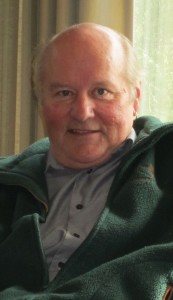 Ray Rivers writes weekly on both federal and provincial politics, applying his more than 25 years as a federal bureaucrat to his thinking. Rivers was a candidate for provincial office in Burlington where he ran against Cam Jackson in 1995, the year Mike Harris and the Common Sense Revolution swept the province. He developed the current policy process for the Ontario Liberal Party. Ray Rivers writes weekly on both federal and provincial politics, applying his more than 25 years as a federal bureaucrat to his thinking. Rivers was a candidate for provincial office in Burlington where he ran against Cam Jackson in 1995, the year Mike Harris and the Common Sense Revolution swept the province. He developed the current policy process for the Ontario Liberal Party.
Background links:
The Buck Stops Here Chris Christie Maple Leaf Foods XL Meats XL Meats 2
Melamine in China Lac Megantic Punishment Fit the Crime

 By Staff By Staff
BURLINGTON, ON.
January 10th, 2013
You do know that all that snow is going to melt at some point.
The weather people are forecasting higher temperatures and some rain – and that will certainly flush out that snow.
 There is a catch basin under there – ice needs to be cleared away so that water can flow. The water will quickly work itself into the streams that run south from the Escarpment through to Lake Ontario – and that water can run pretty swiftly when there is enough of it.
The predicted above zero temperatures along with approximately 10 to 15mm of rainfall for today and tomorrow is going to mean a lot more water in the creeks. The Conservation Authority is expecting some blockages at bridges and culverts that could result in localized flooding concerns.
Widespread flooding is not currently anticipated. The reservoirs are holding at winter levels which allow for larger storage capacity for circumstances of this nature.
Families are asked to ensure that children stay away from watercourses, bridges, culverts and dams. Elevated water levels, fast flowing water, and slippery conditions along stream banks continue to make these locations extremely dangerous. Please alert children in your care of these imminent dangers.
Conservation Halton will continue to monitor stream and weather conditions and will issue further messages as necessary.
Catch basins – those places where water flows through to get to the sewer system. Vital that you clear them. Ice buildup impedes the flow of water. Get out there with a shovel – a spade works well in getting through that ice – and clear the entrance to the catch basins.

 By Pepper Parr By Pepper Parr
BURLINGTON, ON.
January 10th, 2014
 Amy Collard – running again as School Board trustee in ward 5. Amy Collard, the Public school Board trustee for ward 5 is in for another four year run. She filed her nomination papers yesterday as did Gary Carr who thinks he can keep himself sharp for another four years. Given that Carr was acclaimed last time out and there doesn’t appear to be a bright star on the Regional horizon – although we did hear a politically connected type wonder if aloud if the Region was a possible target for Burlington’s ward 6 council member. The glow is thought to be wearing off the tiara in Burlington but in a new market – one never knows.
Ian Simpson has thrown his hat into the ward 5 contest, a Burlington ward that tends to produce three, four and sometimes five candidates each election. Mayor Rick Goldring comes out of that ward 5 cauldron.
None of the city council members have filed their papers yet but all, except for Jack Dennison, have said they intend to run. We will keep you posted.
Amy Collard was acclaimed in ward 5 in 2010 and proved to be an eager little beaver as she learned the ropes and grew to the point where she served as the chair of the board of trustees last year. However, her performance as chair of the Board of Education was not seen by her peers as strong enough fr her to get a second year as chair.
Carr has worked at two things in his life: hockey and politics. His hockey career was limited to the minor leagues and farm teams for some impressive hockey organizations (Boston Bruins and Les Nordiques).
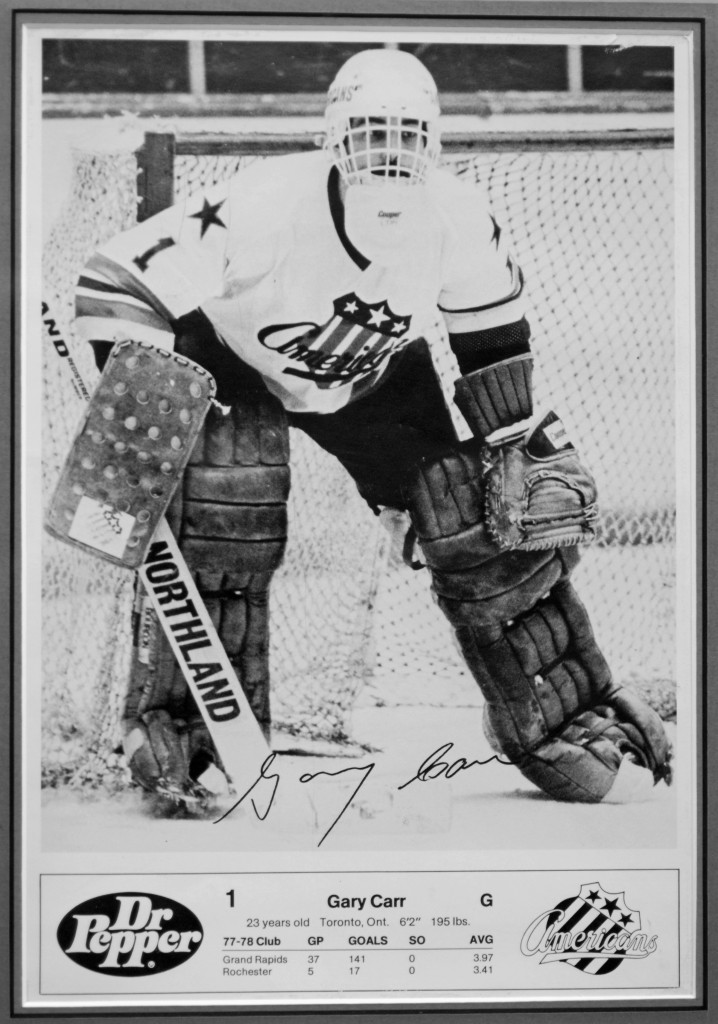 Current Regional Chair Gary Carr as a goal tender. As a professional hockey player he played at Michigan State on a hockey scholarship and then returned to play for the Toronto Marlboros. He was the All Star goalie on the Memorial Cup Champion Marlboros in 1975.
Drafted by the Boston Bruins, Carr played 4 years in their farm system in the International and American Hockey Leagues. He then signed as a free agent with the Quebec Nordiques (now the Colorado Avalanche), where he played 2 more years in the American Hockey League.
Carr has a certificate in Business Administration from Ryerson University as well as an advanced graduate diploma in management from Athabasca in 1999. He also has received his MBA from Athabasca University in 2002.
There comes a time in the world of sports when the body just can’t do it anymore. Gary Carr turned to politics where he has served at the federal, provincial and Regional levels of government.
Carr served in the provincial legislature – Queen’s Park – where he was first elected in 1990 as the Member for Oakville South. He was re-elected in 1995 and again in 1999 to represent the new riding of Oakville. He served as Deputy House Leader, Parliamentary Assistant to the Solicitor General as well as serving on the Finance and Economic, Justice, and Public Accounts Committees.
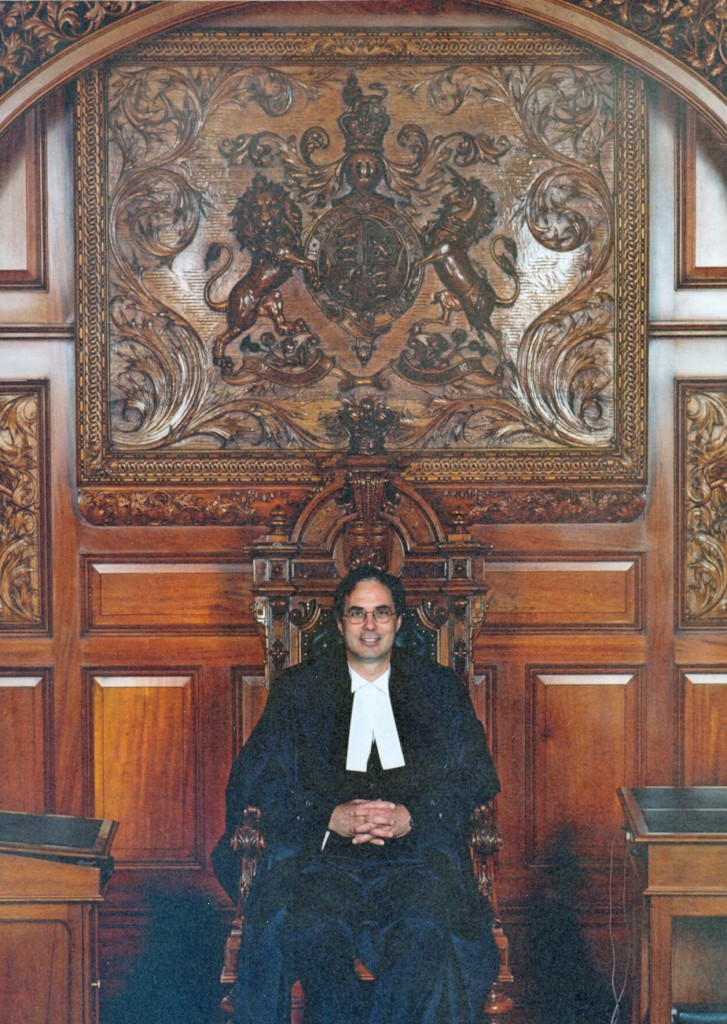 Gary Carr served as Speaker of the Provincial Legislature during the Mike Harris government. He frequently ruled against the government. In October 1999 Mr. Carr was elected speaker of the Legislative Assembly of Ontario and held that position until November 2003. Carr decided to quit politics and take up an opportunity to coach hockey in the United Kingdom. The hockey gig didn’t pan out but Carr had made some decisions that were seen as an attack against the Progressive Conservative government – so the game at Queen’s Park came to an end.
Having burned his Conservative bridges Carr got himself elected to the House of Commons as a Liberal for Halton in 2004 and was defeated for that seat in 2006 when the Liberal party was decimated federally.
He then ran as Chair for the Region of Halton, was in 2006, was elected and then acclaimed in 2010. The filing of nomination papers earlier this week has Carr going for a third term.

 By Staff By Staff
BURLINGTON, ON
January 8, 2014
The Ontario Archives has purchased two more pieces of artwork from the Burlington Art Centre Art Sales and Rental collection.
 Claudette Losier’s “Night Vision” has been purchased by the province as part of its permanent collection. The work purchased this time was by Marc L. Gagnon and Claudette Losier. Ms Losier recently won a prestigious award.
 Marc L. Gagnon did “Horizons” which is also now part of the provinces permanent collection. This is the second occasion for such a purchase. The Ontario Archives has built a state of the art facility to temporarily house the artworks before they begin their journey to municipal offices throughout Ontario.
The artists are paid 55% of the selling price, BAC gets 45%. Net revenue goes to the BAC, to help support programs and services.

 By Staff By Staff
BURLINGTON, ON.
January 8, 2014
They are selling the stuff legally in Colorado where a member of their Legislature sent an email to her supporters Monday night with glowing praise for her state’s recreational marijuana sales, which began New Year’s Day.
“It was a big week in Colorado,” the legislator wrote. “Across the state, recreational marijuana was sold for the first time. And guess what? The world didn’t end.”
But in Burlington – raiding residences and seizing every ounce possible is the name of the game.
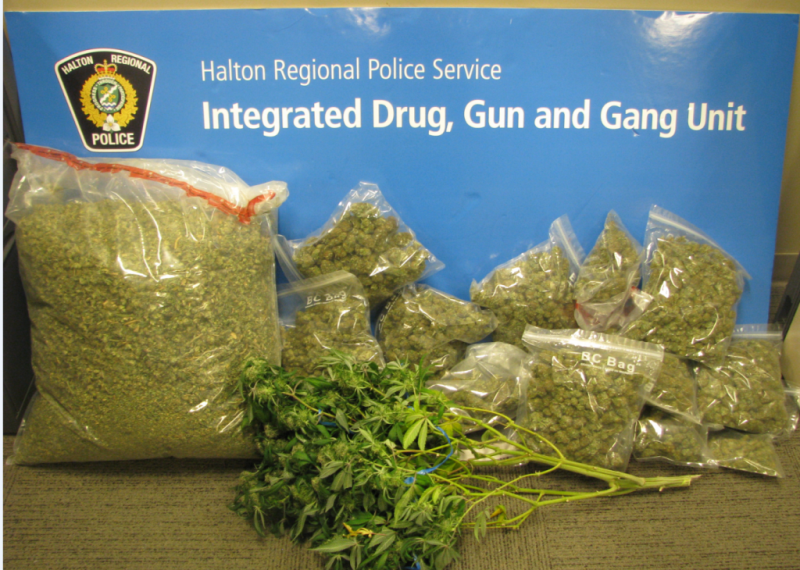 If the laws of supply and demand applies to the drug trade – prices for marijuana should rise. Maybe they are like gas prices where the supply is manipulated. The police wanted the public to be fully aware of what they are doing and invited media to tag along on the raid that took place. Very early this morning members of the Integrated Drug, Gun and Gang Unit executed three Controlled Drugs and Substances Act search warrants within apartments situated at 41 Speers Road, Oakville.
Police located three highly sophisticated cannabis marihuana grow operations in each apartment. It is believe that all three locations are associated to one another and operated by the same suspect(s). Upon entry, police seized 1605 marihuana plants in various stages of growth and over 30 pounds of dried cannabis marihuana.
This investigation is currently ongoing and police are seeking the public assistance to identify the persons responsible. Police have information regarding one suspect who is described as an Asian female in her middle thirties.
Anyone with information on this or any other crime is asked to call Crime Stoppers at 1 800 222-8477 (TIPS) or through the web or by texting “Tip201” with your message to 274637 (crimes).

The deadline for this event has been moved to February 15th 
By Pepper Parr
BURLINGTON, ON.
January 8th, 2014
While it is one of the tightest deadlines we have ever seen, a week to pull together pictures of your work, write a statement setting out what you do and add a resume as well – BUT the event is certainly worthwhile.
The Burlington Art Centre (BAC) , the Region’s Newcomer Strategy and the Multicultural Council have combined their efforts to create an event that will focus on the contribution newcomers to Burlington can make to the arts and culture of the city.
If you know anyone who is new to the community and the surrounding region – let them know about this event. As newcomers – they probably won’t know much about local media. Perhaps they are your new neighbours. Clue them in
Great idea – the execution is just poorly done.
 Having gotten that off our chests – here is the event: An International Art & Craft Festival that will take place on Saturday September 6, 2014 to Sunday September 7, 2014 at the Burlington Arts Centre. Having gotten that off our chests – here is the event: An International Art & Craft Festival that will take place on Saturday September 6, 2014 to Sunday September 7, 2014 at the Burlington Arts Centre.
It has been planned as a weekend of arts, crafts and multicultural performances. The BAC would like to invite musicians, dancers and performers who are newcomers to the region to submit a proposal to take part in the festival. Each performer or group will be allotted 10-20 minutes to perform a show based on their own culture of origin.
Performers should submit the following as part of their proposal:
A list of 2-5 links to videos of your performances posted online.
A copy of your resume including a list of your performance experiences.
A one page performer’s statement describing your performance and how it represents your culture of origin.
All submissions will be reviewed by a jury for selection.
The deadline for submitting proposals is January 15, 2014. Proposals are to be emailed to: Denis Longchamps, Director of Programs longchampsd@thebac.ca He can be reached at (905) 632-7796 ext. 303.
Along with performers the Festival wants to hear from artists and craft makers who are newcomers to the region. Submit a proposal to take part in the festival. The theme for the Arts and Crafts part of the Festival is Sharing.
Get your material into the same people.

 By Pepper Parr By Pepper Parr
BURLINGTON, ON.
January 8, 2014
The city will get its first peak at the budget for 2014 next week when a Budget Overview is given to the Community and Corporate Services Committee.
Burlington has revised its Standing Committee, renamed them and set up a schedule that allows for meetings during the day and in the evening when it is easier for the public to attend. So far however, there don’t appear to be all that many evening sessions.
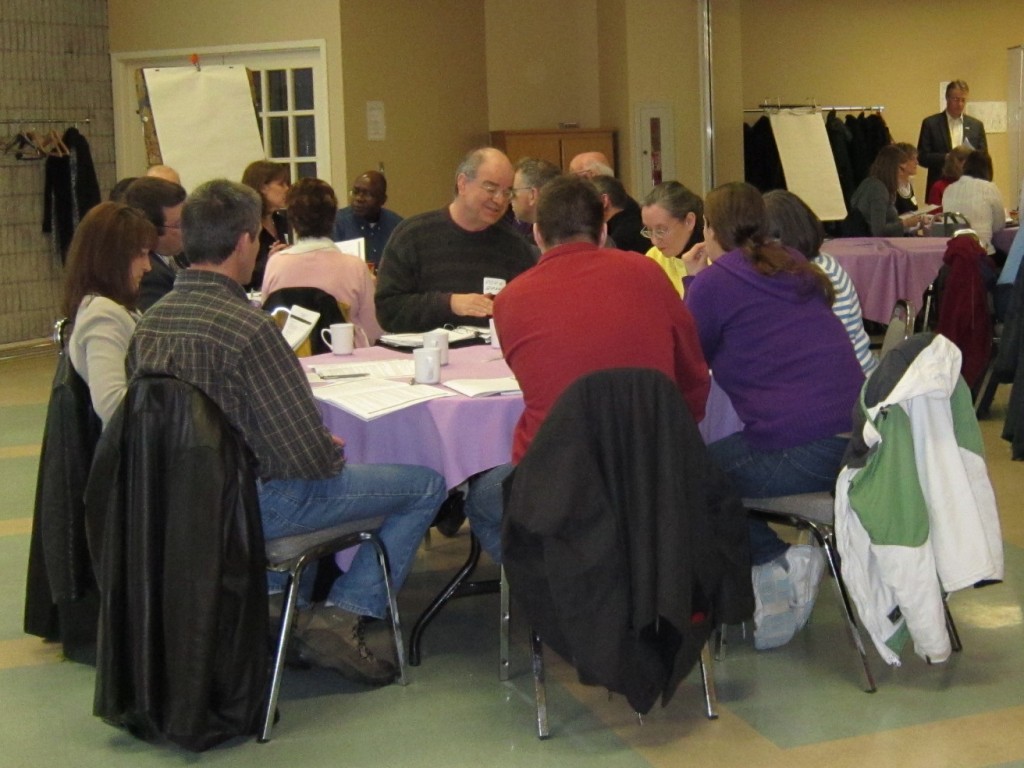 Citizens diligently reviewing the city budget. Do these public events ever result in any change or are they just a one way flow of information: From them to you. The public will get a chance to get an up close and personal look at the budget document on Wednesday, January 29th when there will be a Community Meeting and Workshop on the budget at the Shoreline Room at the Burlington Art Centre. 7:00 to 9:00pm – no open bar.
These public meetings have always taken place “downtown” partly because there wasn’t a decent location north of the QEW. With the opening of the Alton Campus there is no excuse for not holding a second meeting in that part of the city. Attendance will be small but once people in the northern part of the city are told, in a meaningful way that they matter – the public will turn out. And the city will get a point of view they don’t get south of the QEW.
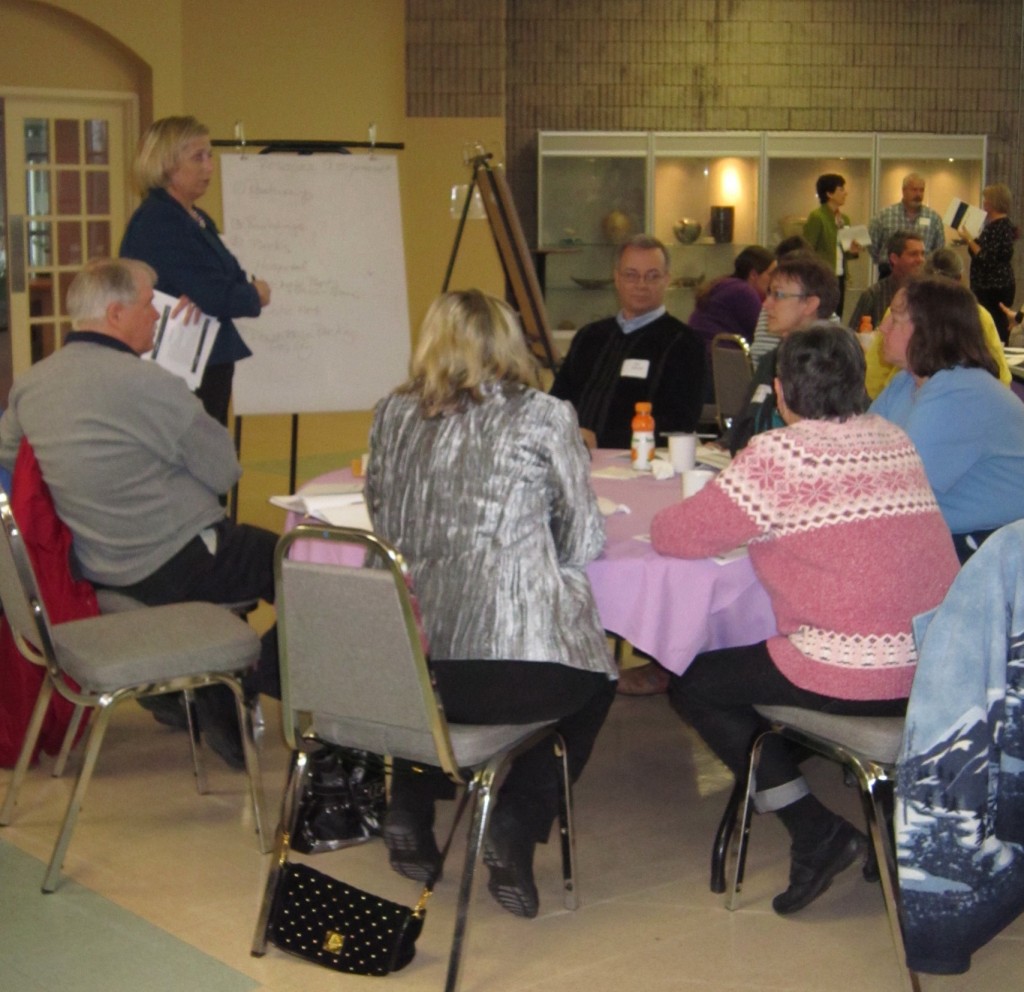 Senior staff facilitate the budget discussions – dies what they hear get any further than the flip chart? And will the city hold public meetings on the Alton Campus? Burlington’s budget is broken into two parts: Capital expenses, things like road work, underpass construction (We won’t see any grade separation work done this year – Mainway and Burloak won’t be done this time around) and the maintaining of the infrastructure we have.
The city administration expects to get the Capital Budget & Forecast review covered and approved in a single session that will take place Tuesday February 11th in Council Chambers starting at 9:30 am. It will then go to Council for a formal vote.
Part two of the city budget – they call it the Current Budget – will be open for delegations on Thursday February 13th before the Community & Corporate Services Committee in the Council Chambers at 9:30 am.
Why this session is not being held during an evening session is very difficult to understand. If the city wants to encourage delegations – truth be told they don’t want to have to listen to a couple of dozen people taking their ten minutes at the podium and giving their opinions. This is how democracy works in Burlington – it is a recent change and not a healthy one. In 1947 Winston Churchill remarked in the British House of Commons that: Democracy is the worst form of government, except for all those other forms that have been tried from time to time.” We paid a very high price for the democracy we have – let us not piss it away.
Council expects to approve the 2014 Capital Budget & Forecast in the Council Chamber during an evening session on February 18th, when delegations can take place. But, because this is a Council meeting, delegations are limited to five minutes and, as the chairs of the Standing Committees always point out – the “heavy lifting” gets done at the Standing Committee level.
The Current budget, which will be quite controversial this time out will get debated in Council chambers by the Budget & Corporate Services Committee on the following dates: Thursday, February 20, Tuesday, March 4 and Thursday, March 6 (if required). All of these meetings are at city hall starting at 9:30 am.
 After all that “heavy lifting” at the Standing Committees the budget will go to Council for approval on March 17th. That event will be an evening meeting. After all that “heavy lifting” at the Standing Committees the budget will go to Council for approval on March 17th. That event will be an evening meeting.
During January Council members will have copies of the budget which they will review and advise the Clerks office of any items in the budget they wish to discuss in-depth. Each Council member fills in a form, the forms get put into a single pile and the Clerk’s office organizes everything so that Council can see which councillors want to debate which budget item.
In the past the city has held what they called a “budget bazaar” that had senior city staff gathering in a room, with each department at a different table so that Council members could go from table to table and discuss in detail a budget concern.
There are significant Current Budget concerns that will have to be addressed in the coming months. Based on the remarks made by the city manager in December it became evident that the city would not succeed in sticking to the promise to hold increase at not more than 10% during the term of office. Few Council members spoke of 10% as a target – except for the Mayor and he may have to live with that prediction.
Fielding, in his comments suggested that it was more likely to come in at 14%+ over the ten years. That is something Council will decide as it moves forward. The budget recommendations come from the desk of the city manager ever since he took that file from General Manager Kim Phillips.
Jeff Fielding did make it clear as well that 2014 is a transition year for the way the city develops its budget. He has brought in an impressive bunch of financial management tools that include Results Based Accountability, Business Process Management and Service Based Budgeting. These tools will result in a move away from the “silo” approach the city has worked with ; one that has each department working its territory when many of the services delivered involve several departments.
So – for 2014 the question is – will Council manage to stick with the 10% and trample a couple of planned changes – culture could be the place where the pinch gets felt; they want to add an additional full-time employee. What gets thrown under the bus? Has transit taken all the pounding it can handle?
Perhaps there is an opportunity to suck out a bigger dividend from Burlington Hydro. The ice storm may have eaten up any spare cash they happened to have in the kitty.
There is of course a bunch of “reserve” funds – piggy banks with money set aside for a rainy day. And an election year is seen as a rainy day.

 By Pepper Parr By Pepper Parr
BURLINGTON, ON.
January 8, 2014
Brian McCurdy has a big job ahead of him for 2014 – and that is dispelling a bunch of myths that have grown up around the Performing Arts Centre.
The public talks about the budget problems, they talk about the acts that come to the city with little understanding or appreciation for how the entertainment business operates. Burlington is a small market that is not high on the list of prime venues for the groups that put together a tour across the province or the country. The Copps Coliseum fits into that category – Burlington has to fit in with a bigger picture.
 The first myth he wants to dispel is that non-profit groups are not using the Performing Arts Centre. “We have had more than 165 non-profit groups use the space. Their use doesn’t appear on the Centre’s web site so people don’t see the activity and other than the people involved and attending – most people don’t know what takes place. The first myth he wants to dispel is that non-profit groups are not using the Performing Arts Centre. “We have had more than 165 non-profit groups use the space. Their use doesn’t appear on the Centre’s web site so people don’t see the activity and other than the people involved and attending – most people don’t know what takes place.
The Centre wasn’t telling its story and if you don’t blow your own horn – no one gets to hear your music.
The Centre recently held a Poetry Slam which was certainly new to this city. Later this month there will be a short film festival. Unfortunately with just 12 days before the event no one has learned what the film offerings are going to be.
 You could probably get space at the Performing Arts Centre on a Monday or a Tuesday evening – other than that the place is pretty heavily booked. Turning a profit? Not yet – it wasn’t supposed to. McCurdy, who brought years of experience with him to Burlington when he drove up the 401 from Kingston, has a sense of the dynamics he has to work with and has settled into his new gig.
He has a consultant working up some data that will get shaped into a Strategic Plan. Brian Arnott, a cultural consultant who was in town doing some work for the Burlington Arts Centre (BAC), stayed a little longer and did a number of one-on-one interviews with people to get a sense as to what the community wanted and didn’t want and what the issues were when it came to the Performing Arts Centre and culture and the city.
McCurdy arrived in Burlington at a point in time when the cultural community began to show itself. One of the first inklings that they even existed was when Trevor Copp delegated to city council and said he resented having to drive into Toronto to practice his craft and make a living. He wanted to see a change.
At about the same time the city was getting the early draft of the Cultural Discussion report Jeremy Freiburger had put together.
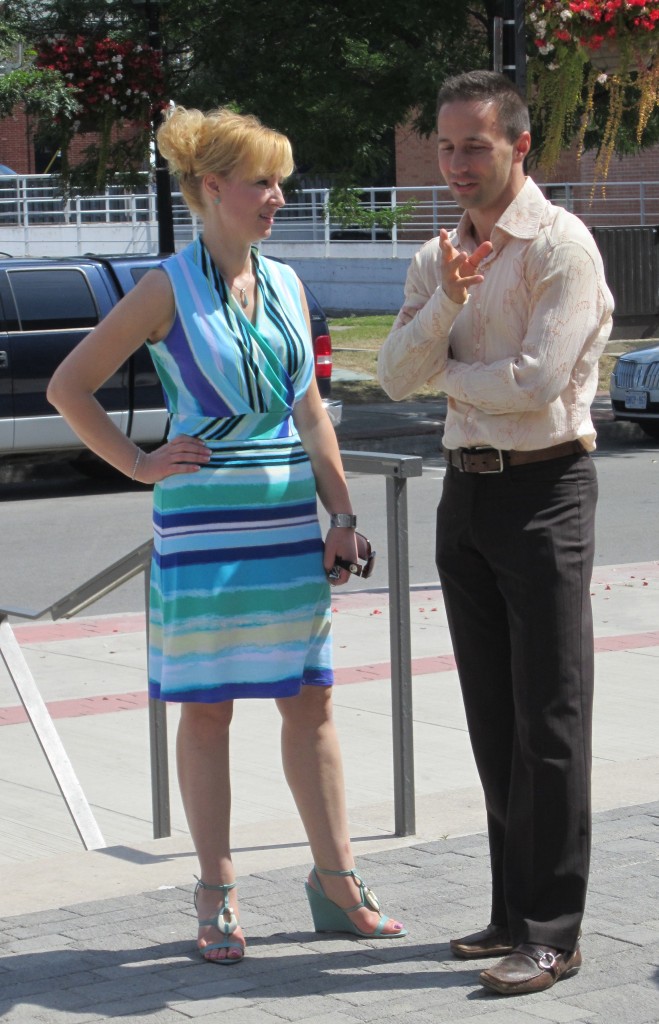 Angela Papariza, started work with the city as a Parks and Recreation Planner bur has been shifted to a Cultural Planner; part of the city’s plan to create more cultural presence at city hall. Trevor Copp, on the right, shook up city hall when he told council he wanted to be able to ply his trade in Burlington and went on to be part of creating the Arts and Culture Collective that lobbys at city hall. Copp was not prepared to stop with a delegation to council. He, along with others, called a meeting and invited every arts person they could think of – 20+ people showed up. That resulted in a second meeting that brought 125 people to a meeting and Burlington’s Arts and Culture Collective was born and the city began to hear from a focused voice.
As the city moved from the report Freiburger had prepared into the creation of a Cultural Action Plan the Collective improved its organization and pushed to get a seat at the table where the decisions were being made.
The city is now working up a Cultural Action implementation plan that will be part of the 2014 budget deliberations and there is now representation from the artists.
McCurdy has three small white boards on his office wall that set out what’s coming to town and there aren’t a lot of open spaces. You can book a Monday or a Tuesday but there isn’t much more than that available stretching into 2015 – which is the point where McCurdy thinks he might be able to get by on a little less than the more than THE $500,000 subsidy that comes from the taxpayers.
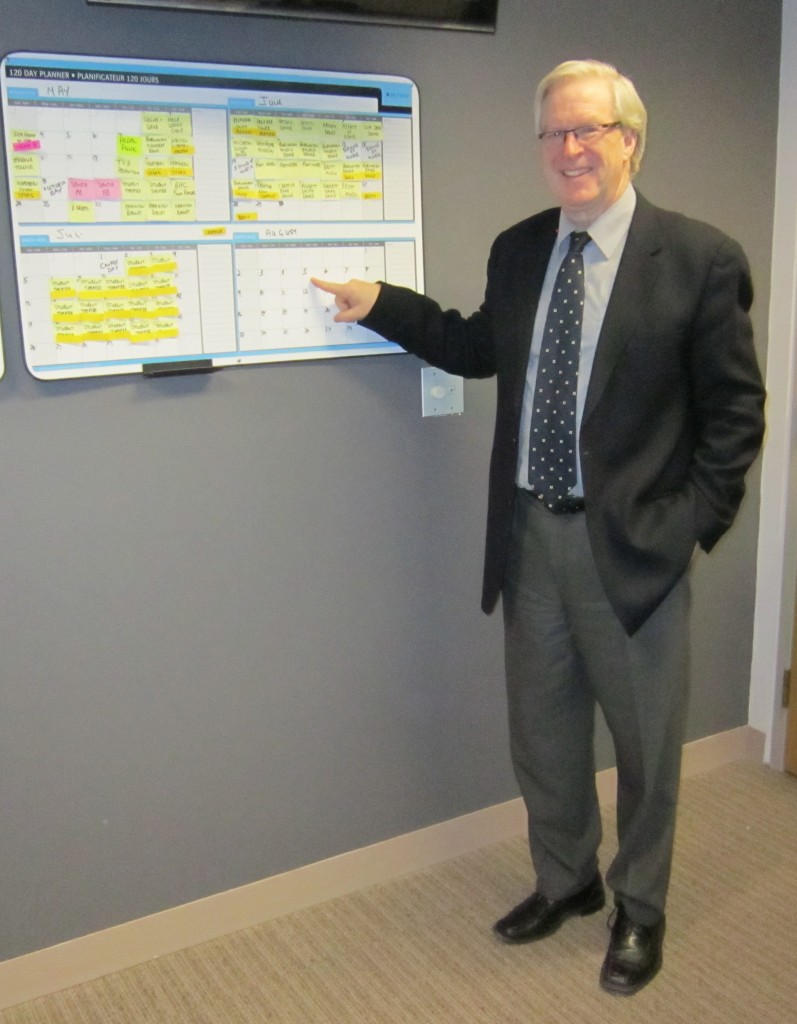 Brian McCurdy is kind of pleased with the bookings he has for the Centre. What the public is seeing under McCurdy’s had is much more community use of the space. Last week the first ever Ontario wide Poetry Slam took place at the Performing Arts Centre. Except for a very small, select group of people, Burlingtonians didn’t even know what A Poetry Slam was.
Next week a free dance workshop will take place at the Centre. Nova Bhattacharya will use lecture and demonstration to take participants on a journey through dance from the classical Indian style and demonstrate how it has evolved into contemporary dance with a South Asian sensibility.
Later the same day she will be offering a 90 minute master class to those interested in learning the basics of bharatanatyam. That’s another cultural phrase that hasn’t exactly rung in the ears of the city’s cultural community.
 The basics of bharatanatyam will be taught at the Performing Arts Centre. The dance class is part of the Performing Arts Centre’s outreach is funded by an Ontario Arts Council grant and delivered by the KooGle Theatre Company.
The Performing Arts Centre went through a bit of a bumpy start. The Theatre Burlington Board which provides oversight of the Centre beefed up its membership and added some needed talent; they actually have a working musician on the board – in the past that board has been made up of people with a financial background. The Board along with some senior staff have taken part in two retreats where they looked at everything.
The Centre did part ways with the first Executive Director and brought in Brian McCurdy. If the funding plans that are being worked over at city hall actually get through city council, 2014 could prove to be an interesting year for culture in this city.
However, Brian McCurdy is not depending on the city to keep his growth plans alive. He intends to develop a membership program that will be part fund-raiser and part developing the depth of the cultural community in the city. Membership will include priority seating, a pre-purchase program and opportunities to meet some of the performing artists in a social setting.
McCurdy has some thoughts on corporate sponsorship as well. His management style is quiet, he develops relationships over time so don’t expect much in the way of flash from this guy. Do expect significant solid ideas and plans he actually delivers on.
Background:
BPAC board gets beefed up.
It was certainly a different program: Ten Rooms.
Artists showing at the Seaton Gallery

 By Staff By Staff
BURLINGTON, ON.
January 8th, 2014
The Province, the Region, the city and even the local drug store – all want you to get your flu shot – and do it now. While the incidence of flu in Ontario is not high – it is surprisingly high in Alberta and British Columbia, and the stuff travels.
 The flu shot is free – and it doesn’t hurt THAT much. The Chief Medical Officer of Health for Ontario, Dr. Arlene King, is reminding Ontarians to protect themselves from influenza by getting the flu shot. She stresses the importance of getting immunized – particularly with an increased proportion of laboratory confirmed cases of the 2009 H1N1 flu virus in the province and across the country this year.
This strain of influenza affects people of all ages, but children under five and those age 20 to 64 years old appear to be most susceptible. To date, children under five appear to be most at risk of hospitalization. Deaths have been reported in adults and the elderly.
The flu vaccine is safe and the best way to keep you and the people around you healthy during the flu season.
The Region announced today that that the last two regularly scheduled influenza (flu) immunization clinics will be held on Wednesday, January 8 and Wednesday January 15, both from 4 p.m. to 8 p.m. in the auditorium at the Halton Regional Centre in Oakville.
The H1N1 influenza virus is currently circulating in Halton and this strain of virus is included in this season’s vaccine. It is not too late to get your flu shot to protect yourself and to prevent spreading the virus. Residents can still get their flu immunization from many pharmacies, clinics and doctors’ offices.
The free flu vaccine is available at doctors’ offices and is also available for those five and older through specially trained pharmacists at close to 2,000 pharmacies across Ontario – three times as many pharmacies as last year. Rexall pharmacies in Burlington offer the service as well as others.

 By Pepper Parr By Pepper Parr
BURLINGTON, ON.
January 8, 2014
The people who believe they matter in this city are going to travel to Queen’s Park and tell the Burlington story to just about anyone who will listen. They plan to do this “ in the Spring”.
The Mayor will lead the parade. Perhaps they will form a “congo line” from Union Station and dance up University Avenue and into the Legislature – they will travel by GO train won’t they? As for the rest of the people on that GO train city hall is “still finalizing but there will be Council and senior management team representatives.
Is this team of stellar player travelling into the big smoke to ask for money? The Mayors Chief of Staff advises “There will be an ask for support but this would include a combination of things. Anything specific we asked: “There will be multi prong objectives to the meetings”. And if you have figured out what that means – tell us, because we don’t see any information in the statement.
 Is Burlington the Rodney Dangerfield of Ontario municipalities – continually looking for suspect? Burlington is sort of like the Rodney Dangerfield of smaller Ontario communities. Tucked in between rough, tough, gritty Hamilton and snooty Oakville, Burlington continues to boast about its splendid waterfront (which it is prepared to sell a portion of, if the price is right, or you can scare city council with a law suit – but I digress) and the Escarpment that a lot of people want to drive a road through.
How does a city go about changing the way it is perceived? City hall thinks our story should be taken to Queen’s Park where they can talk to the people who make things happen in the province and see how they feel about the development charges we have raked in.
Or we could tell them about how we managed to put up a pier that was to cost something in the $6 million range but got ramped up to $14 million and we still have a court case to settle.
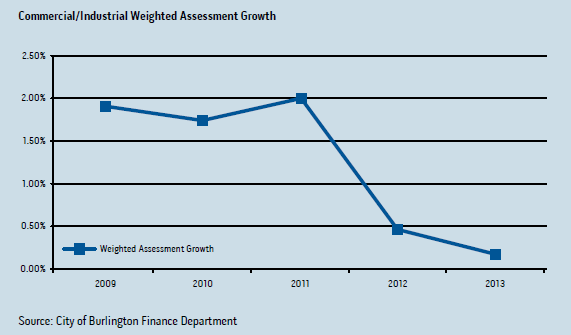 Not exactly growth is it. Burlington tax revenue from the Commercial sector is falling and there are no clear signs that it will improve in the very near future. Revenue has to come from somewhere – residents are an obvious source. Burlington wants to tell its story – but no one is quite sure just what that story is. If there is a vision – it’s tough to see it – unless you are looking at all the “happy talk” that comes out of city hall. Try this for size: “Burlington is widely recognized as a great Canadian city. Not only do 95 per cent of Burlington residents rate their quality of life as excellent or good, but MoneySense magazine has named Burlington the best mid-sized city in Canada and the third best city of any size for 2013.”
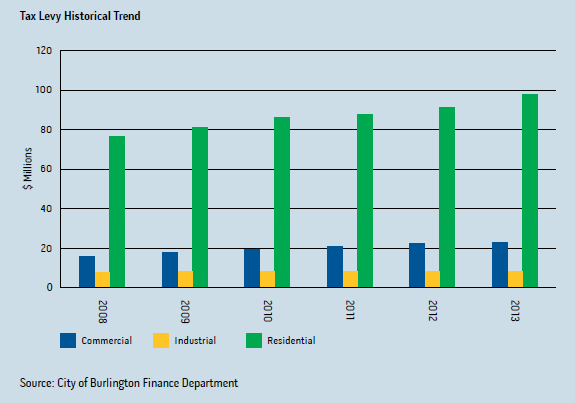 The sources of tax revenue. The yellow and the blue columns have to be grown – no one is sure just how he city is going to do that. But how do we stay great? , the city asks. In the future, the challenge will be to maintain service levels and high quality of life without significant tax increases. We need to do this in the context of more modest growth, which means we must be proactive in planning and developing resources, especially our land base.
All too true but we have at least one land holder who refuses to work with the city to develop in a moderate intelligent manner. Paletta International wants to convert lands currently zoned as employment lands into residential where the return on the investment is much more attractive.
There is another developer who has come up with a unique, interesting – even intriguing approach to development that doesn’t follow the traditional pattern. Evergreen has been sitting on a piece of property at the intersection of Dundas and Tremaine Road for more than ten years that stretches all the way to Hwy 407. This development has gotten stuck in that quagmire that includes differences of opinion between the Regional Official Plan, Burlington Official plan and the plans that Oakville has – the property sits on the border of the two communities – and Ontario Municipal Board hearings.
“We need to transition: says city hall “from an expanding suburban community to one that “grows in place,” finding new and innovative ways to grow revenues – especially the assessment base – in sustainable ways that recognize the challenges posed by growth limitations.”
That “grows in place” phrase is one you are going to read a lot about in the next few years. It needs a little more drill down to be fully understood.
“Burlington needs to sustain its revenue base, while maintaining the service levels and quality of life residents have come to enjoy and expect.”
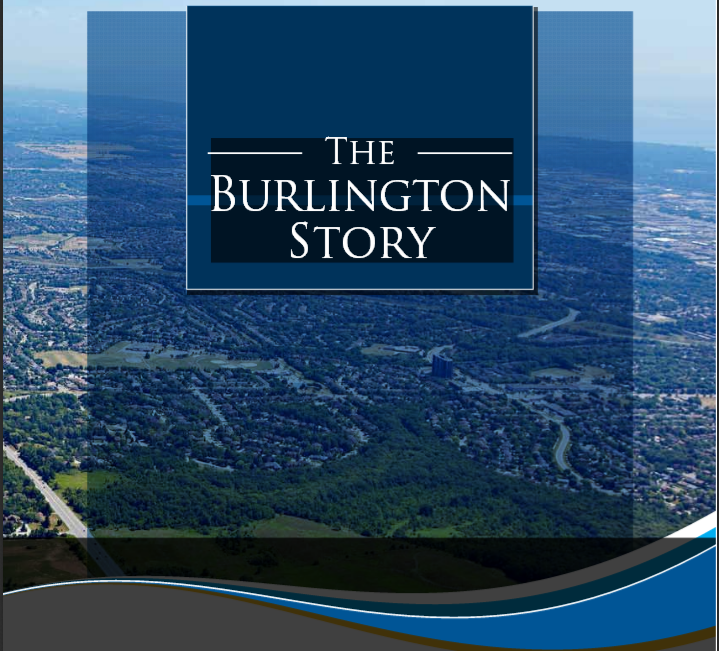 City of Burlington is going to take its story to Queen’s Park in the Spring To capture some of those challenges, the city has created The Burlington Story. It tells the story of where we’ve been, where we are today and where we’re going. Watch for Mayor Goldring to grab this story and use it to as one of the major planks of his re-election platform. That assumes of course that the Mayor will be challenged in his decision to get re-elected next October.
Is the “Burlington Story” the revised version of the Mayor’s vision?
Residents of the city will get their first look at just where our Mayor wants to go when he delivers his State of the City address January 23, 2014. The event is hosted by the Chamber of Commerce, tickets are available at the Chamber of Commerce.

 By Staff By Staff
BURLINGTON, ON
January 7, 2014
To assist with the financial burden of the ice storm on those with limited incomes, the Province of Ontario has given Halton Region a limited number of grocery vouchers. Although many people lost food and incurred costs from the storm, the vouchers will only be available to Halton residents who lost power for 48 hours or more and are facing financial hardship.
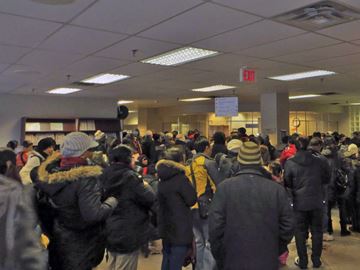 Line ups in Toronto for grocery vouchers were very long – but at least they were indoors and didn’t have to travel to some industrial part of the city to get the help they needed. Beginning Wednesday, January 8, the vouchers will be available at selected food banks throughout Halton Region until supplies are exhausted. Each food bank location will use their established screening criteria to assess financial need. Individuals must also bring proof of address.
In Burlington the location is: Salvation Army, Burlington Family and Community Services, 5040 Mainway, Unit 9, Burlington. Telephone number there is 905-637-3893
9 a.m. to 4 p.m.
How much are the vouchers? Families can get $100; Individuals can get $50
The location for the distribution of these vouchers has got to be one of the most difficult to get to. With the weather as cold as it is – it seems almost cruel to send people that far for a food voucher. For those on assistance a car may not be one of the things they own. Bus route 81 will get you there – but it will be cold and there is no service from 9:30 to 3:00 pm.
A better alternative is Route 80 across Harvester and then a transfer to route 83 – the service is better. Doug Brown, one of Burlington’s transit advocates points out that for those who don’t have a car the $6.50 cash fare for a return trip – just to get $50 for a single person isn’t really worth the effort.
This effort on the part of social services from the Region looks to be something done quickly and done poorly.
The weather is so cold that the Region has suspended the pick-up of brush from road sides
Call your city council member and ask him to arrange a ride for you.

 By Staff By Staff
BURLINGTON, ON
January 7, 2013
Two imports from Hamilton may not be going home soon. They were arrested in connection to a rash of night-time residential break and enters in Burlington.
An observant citizen saw something that didn’t look quite right shortly after 5:00 am on the 5th of January and called police to report the suspicious activity.
Police converged on the area and quickly determined a residential break and enter was in progress into a home on Woodland Avenue. They arrested one male inside the home while another fled on foot but was later identified and arrested at his residence in the City of Hamilton. The first guy had turned on his partner in crime
Investigators have identified two more residences that were broken into and another where an entry was attempted. In each instance, the homeowners /occupants were away.
Police have seized an involved vehicle that contained stolen property. A search warrant was executed in the City of Hamilton where money, jewellery, safes and electronics were recovered.
The investigation is ongoing with more charges expected as there are links to past similar break and enters that have occurred in Burlington and Oakville since October 2013.
Accused:
Shane Curtis PYE-PERLER (04NOV1987) of Wilson Street in Hamilton is charged with:
3 counts of Break and Enter and commit indictable offence of theft
1 count of Break and Enter with intent to commit an indictable offence
1 count of Possession of Property Obtained by Crime.
Jermaine Omar GRAHAM (27JUL1990) of Market Street in Hamilton is charged with:
3 counts of Break and Enter and commit indictable offence of theft
1 count of Break and Enter with intent to commit an indictable offence
1 count of Possession of Property Obtained by Crime.
Anyone with information is asked to contact Detective Ellie Bale – 3 District Criminal Investigations Bureau – Residential Crime Team at 905-825-4747 Ext. 2312.
If you have information on this or any other crime please call Crime Stoppers at 1 800 222-8477 (TIPS) or through the website or by texting “Tip201” with your message to 274637 (crimes).

 By Staff By Staff
BURLINGTON, ON
January 7, 2014
In the world of social benefits and pension December is a different month. The federal government sends out pension money around the 20th of the month – when it is normally sent out the last few days of each month.
People stock up because they know there isn’t going to be another cheque until the end of January. Thus there were a lot of homes with a lot of food in the freezer. When the lights went out – the food went bad and had to be thrown out.
The provincial government put in a plan to give people bank cards with food money and most of the supermarkets as well as Canadian Tire pumped money into the program.
It took a week or so but the province realized that the world does not end at the Toronto border and some of that food card money will be working its way to Halton.
Later today, the Region expects to publish information on where the food cards will be available and how they can be obtained.
The Region does point out that there is going to be a very limited allocation for Halton and that these cards are for people who are already on assistance and have no other way to purchase the food they need.
Given that social assistance is handled by the Regional government they already have lists of names and know for the most part where the need is most pressing.
There will be more information from the Region later today.


By Staff
BURLINGTON, ON
January 7, 2014
The Regional Police Service has done something we don’t see very often; they published the photograph of a minor and provided the public with a copy of the document they took before a Justice of the Peace to get the authority to publish the picture.
The authority to publish the picture has limitation attached to it. It must be removed from wherever it is published by 11:5 p pm on January 10th, 2014. How is that going to be enforced?
 Unidentified male wanted for questioning on a sexual assault complaint. Media were given a copy of the picture – the moment we publish it is out there for the world to see and it is all but impossible to erase once it’s public.
The youth, based on the photograph, looks like a high school or community college student. Once someone at a high school sees the picture it gets routed to every person with a cell phone.
We are curious as to why the police took this action for an event that took place last October. Here are the details.
On October 17, 2013 at 6:45 p.m., a 13-year-old girl was waiting in line at a Subway restaurant on Driftwood Drive when she was approached from behind and her buttocks were grabbed. The offender did not converse with the victim and promptly left the establishment.
The offender is described as male, white, 17 to 19 years of age, 5’8” tall, medium to heavy build, short dark brown hair with acne on his face. He was wearing a dark-colored hoodie with ‘IRISH’ written in white lettering on the front and white laces protruding from the hoodie area, a white shirt underneath with baggy blue jean shorts (tied in front), white socks and black runners.
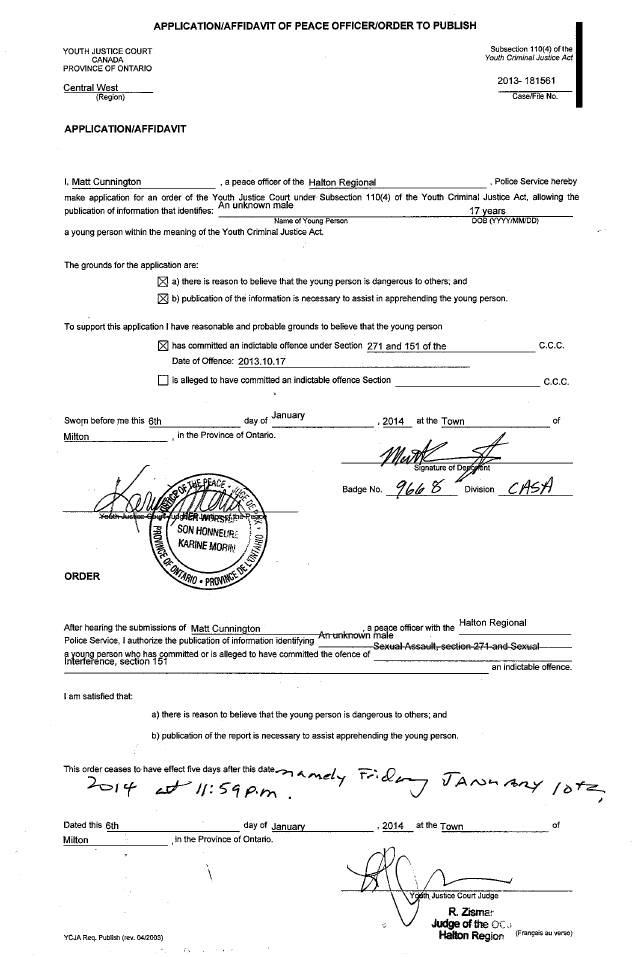 The police asked for and were given authority to publish the photograph of a youth suspected of grabbing the buttocks of a young woman in Burlington last October. The time limit placed on the release of the photograph is highly unusual and suggests a lack of understanding of what happens to content when it appears on the internet. The police asked for and were given a Judicial Authorization to release the suspect’s photo. The photo is authorized to be posted until Friday, January 10th at 11:59pm. That authorization is for the police website. We see nothing in the Authorization that calls for the Gazette to take down what we put up on the 10th of January.
The police ask that anyone with information concerning this offender to contact the Child Abuse and Sexual Assault Unit at 905 465-8970, Crime Stoppers at 1 800 222-TIPS(8477), through the web at www.haltoncrimestoppers.com or by texting ‘Tip201’ with your message to 274637(crimes).
This action on the part of the Halton Regional Police Service does not appear to have been thoroughly thought out.
We will follow this one with considerable interest.

 By Staff By Staff
BURLINGTON, ON.
January 6, 2014
The Ontario Provincial Police (OPP) reported a significant drop in the number of impaired driving charges officers laid during their province-wide 2013 Festive Reduce Impaired Driving Everywhere (RIDE) Campaign.
The campaign, which ran across the province from Nov. 23 to Jan. 2, 2014, resulted in 578 impaired driving charges being laid by OPP officers. Another 481 Warning Range Suspensions were issued.
By comparison, OPP officers laid 693 impaired driving charges during the 2012 campaign and issued 625 Warning Range Suspensions.
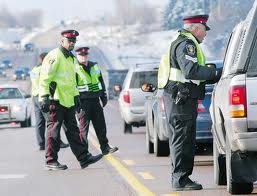 It’s time consuming work =- but this year it kept 15 people with too much alcohol in them off the roads. Time well spent. While the OPP indicated they were pleased to see the lower numbers associated with the 2013 Festive RIDE campaign, they said the charges serve as a reminder that a small number of impaired drivers threatened the lives of other road users over the holidays.
Locally the picture was about the same as last year with fewer cars stopped but the number of charges laid the same as 2012.
The Reduce Impaired Driving Everywhere (R.I.D.E.) program remains a key deterrent against drunk driving. R.I.D.E. spot checks are conducted year round, with an emphasis placed on holidays and long weekends when higher volumes of traffic and opportunities to drink and drive are present.
R.I.D.E. 101 was an innovative pilot project created by the Halton Regional Police Service in 2006 to educate young drivers about the risks associated with impaired driving. The three-phase program geared towards high school students includes on-campus demonstrations and displays, as well as actual driver spot checks.
Follows are the results of the 2012 R.I.D.E. holiday campaign for Burlington which ran from December 1st-31st:
Vehicles stopped: 6,075
- Roadside breath tests: 208
- Pass tests: 192
- Warn tests: 13
- Fail tests: 3
- Impaired charges: 5
- Over 0.08 charges: 8
The Halton Regional Police recently appointed a new Media Relations officer: Sgt Chantal Corner, who advises us that their number for the 2013 RIDE program were as follows:
4,125 cars were stopped during the R.I.D.E campaign
203 Roadside tests were administered with 172 pass tests, 22 warns and 9 fails.
Three charges of Impaired Driving were laid and 12 charges of Over 80 mg.

 By Staff By Staff
January 6, 2014
BURLINGTON, ON
The Mayor wants to keep his job – he threw hit hat into the ring this morning. Now all he needs is a candidate to run against him.
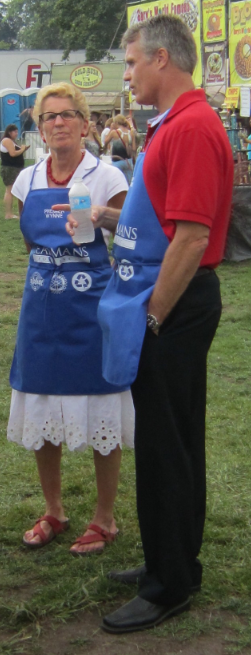 Mayor Rick Goldring with Ontario Premier Kathleen Wynne. Will she get re-elected before he faces the electorate and will he win when he does? Other than a notice on the city’s web site that published who has filed nomination papers and who has not – there isn’t a word from the mouth of the Mayor.
No media release, nothing on his blog. There is no mention of a campaign website; there is a personal email address to reach him as a candidate. rickgoldring@hotmail.com
Last time out, then Council member Goldring, issued a number of well written position papers. Residents have no indication from Rick Goldring at this point as to why he thinks he should be re-elected.
We will just have to wait and see how he rolls out his campaign.


By Pepper Parr
BURLINGTON, ON. January 6, 2014
The Free P is over. You have to put coins in those parking meters today and the rate for that spot to park your car went up 25 cents an hour as well.
Burlington took a brave step when it offered free parkingin the downtown core for the month of December, as part of a drive to entice shoppers to visit the downtown merchants over the holiday season.
Couple of bumps during the first few days when people who work downtown decided they could now park for free and took up many of the spaces that were intended for shoppers.
 Free parking ? For who? It got so bad the first few days that city manager Jeff Fielding had to send an email to everyone employed by the city explaining the parking spaces were not for city employees but for shoppers who wanted to come downtown. It wasn`t just city employees abusing the free parking – several merchants were parking their cars in the free spaces.
Ward 2 Councillor Marianne Meed Ward put a lot of her political capital on the line when she pushed for the free parking and the Burlington Downtown Business Association (BDBA) got behind the idea with everything they had.
Did it work? It could have and it should have but there is no data so far and without data no one will ever know. Did the public like the idea? We don’t know yet.
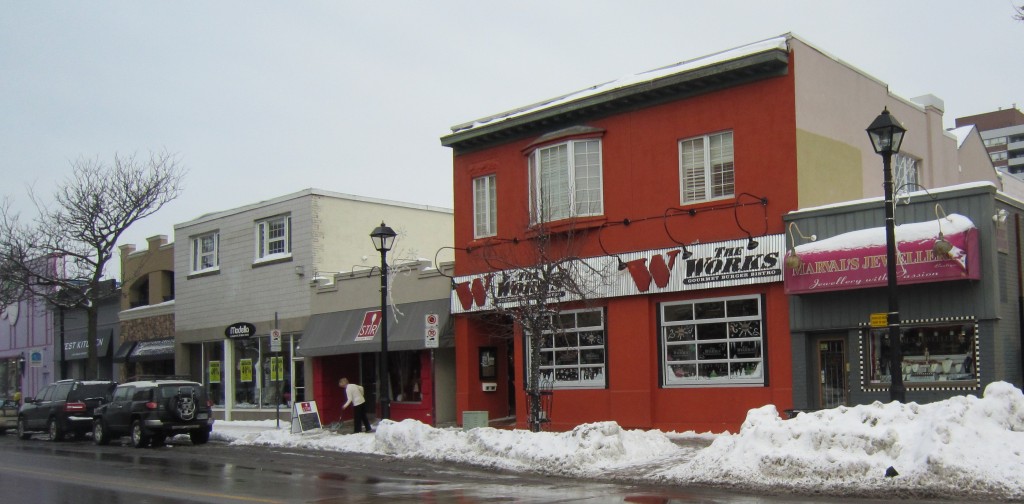 East side of Brant Street xx days before Christmas 2013. Not exactly festive was it? Malls were much better. Here however is what we do know: For the second year in a row the majority of the downtown merchants did precious little to decorate their store fronts and give the streets something in the way of a festive look.
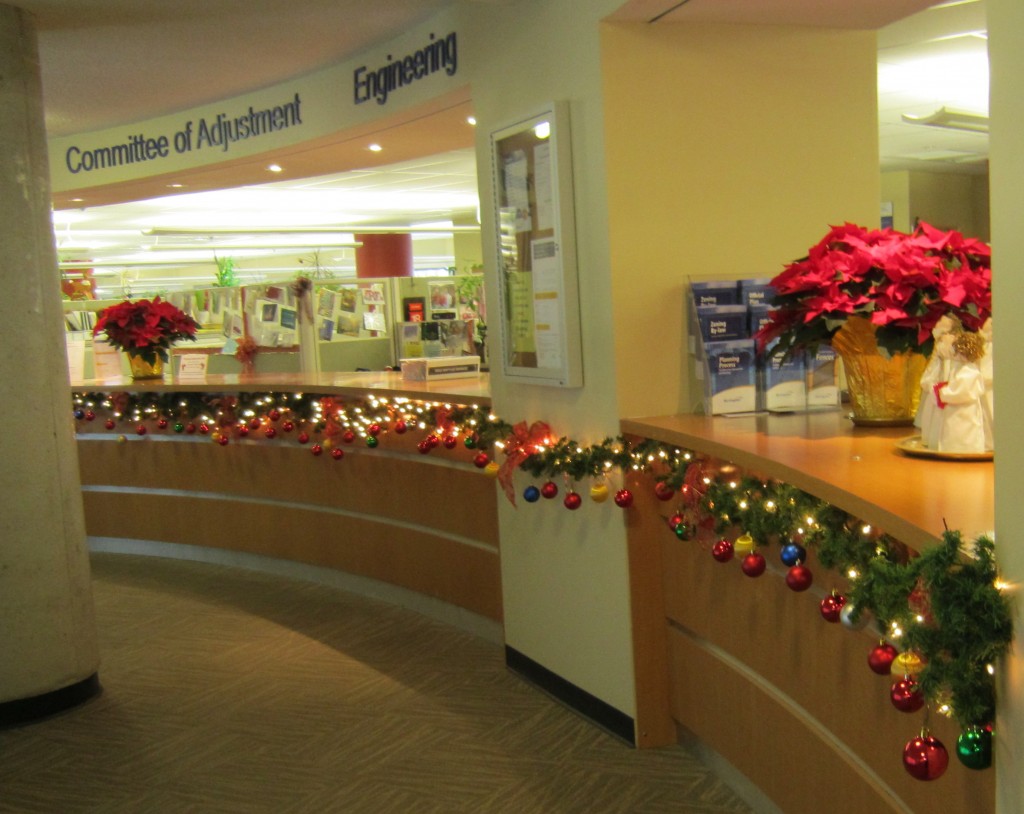 The Planning department made a decent effort to make their public counter attractive and festive. City hall didn’t do much better. The Civic Square was close to pathetic and inside the building it was as if December was just another month. There was a tiny little tree beside one of the entrance doors and poinsettia set out around the building. The people in the Planning department did gussy up their counter a little – they are on the second floor where other than contractors getting permits there wasn’t much in the way of public exposure
Retailers love to see some snow on the ground a week or so before Christmas; that is said to draw out the shoppers. This year we go snow – we really got snow and icy rain as well those very last few days and then the city moved into survival mode to get through the hard weather.
There is something decidedly unhealthy about the state of retail in the downtown core. Is it the retailers themselves who just don’t want to put themselves out or is it a leadership problem with no one developing good ideas or programs for the retailers to follow-up on.
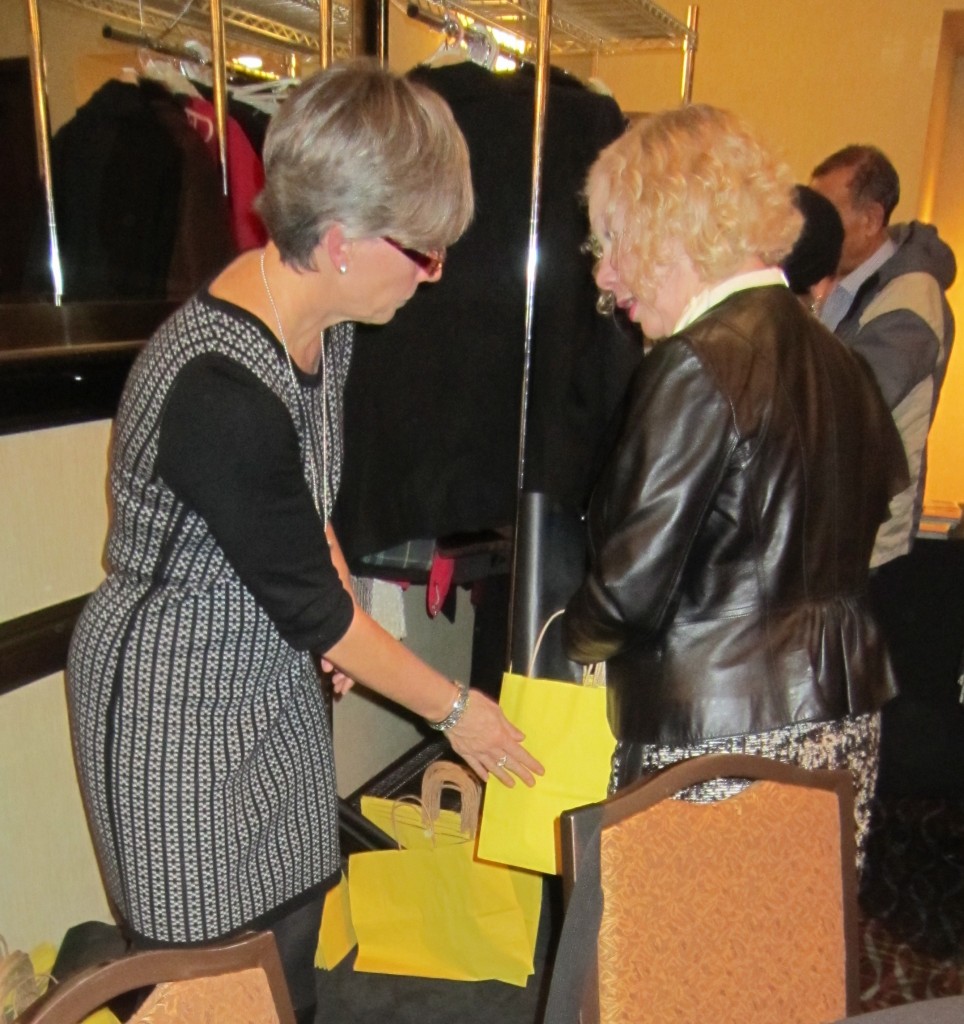 The Yellow bags were there for the taking – problem was not that many of them were taken. Good idea badly executed? Or just a bad idea? The BDBA hopped on a wagon that wasn’t going anywhere when they took part in the Yellow Bag program sponsored by the Yellow Pages people. The idea had been run in Oakville where it was said to be a mistake. Based on what we saw in local shop windows it was as bad a mistake in Burlington.
It doesn’t matter how much drive Councillor Meed Ward puts into getting programs that goose up things in the downtown core – it is the merchants who are going to have to make it happen. And based on what was visible on the streets – it didn’t happen this year.
Did the cash register go “kaching” a lot this year? Not sure if the merchants will make any of their data available. Does the DBDA have a data collection program in place that would allow them to publish figures? We’ve not seen anything coming out of that office.
The city wants to upgrade the parking meters it uses and is having a little difficulty getting that process going the way they want it to go. Two Requests for Proposals have been issued – both were withdrawn. The most recent withdrawal was due to some significant misunderstandings between the city and those responding to the RFP.
There is some fantastic technology available now that could tie the parking meters into loyalty programs merchants could take part in – ways for merchants to pay for the parking on behalf of their customers – but all the technology in the world won’t make a difference if the retailers don’t behave as retailers and do some intelligent marketing.
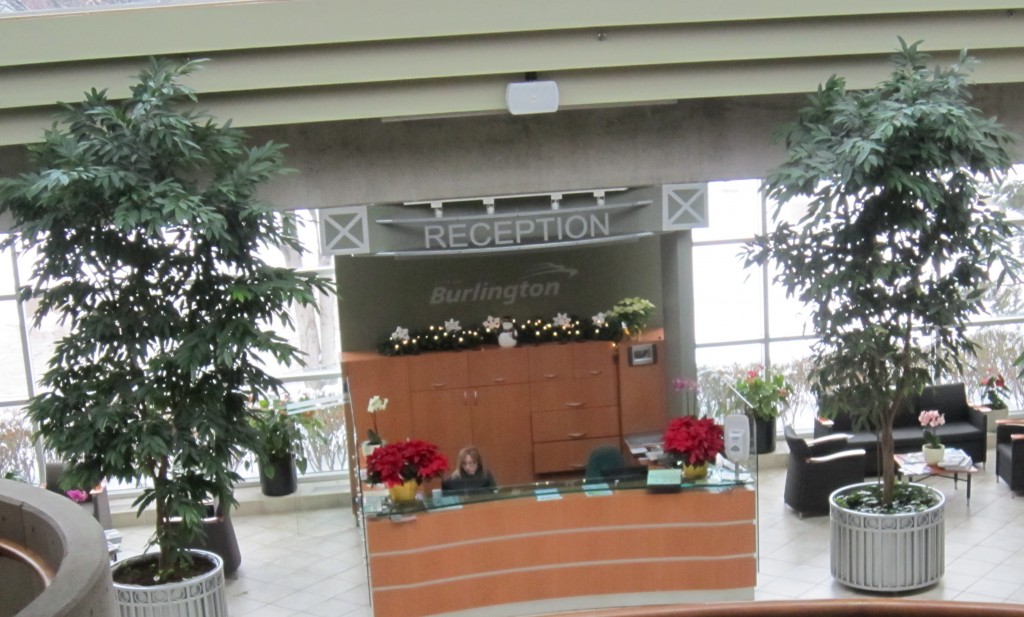 Two poinsettia on a counter do not a Christmas look and feel make. The city could have put two decent size Christmas trees to the right and left of the reception desk and made it a social evening for staff by having everyone down to the lobby to decorate the two trees. Civic Square didn’t look all that festive either. The city has done everything it can to help the downtown core overcome the difficulty parking meters create in the minds of shoppers. Parking appears to be free at the malls – it isn’t but it also is not seen as a direct cost to a shopper.
New language was developed to move the focus from the parking meters to the idea that shopping downtown is a destination and an experience – which is great. But that experience needs wasn’t there last December with retail shops almost devoid of any sense that it was Christmas time. On that level the malls beat the core.
There is some serious work to be done if this city is going to manage to get its act together and make the downtown core actually work. We should set aside the word vibrant for the next while because it just ain’t so.
Background:
The Free P video – hilarious.


By Pepper Parr
BURLINGTON, ON January 4, 2014
When we began publishing an on-line newspaper for Burlington the hope was that we would better inform the public and that an informed public would make informed decisions.
We took our leadership from the Shape Burlington report that focused on what that document called Burlington’s information deficit.
I was mentored by the late John Boich, a co-author of the Shape Burlington report, whose wisdom, guidance and approach to life I deeply miss. His boisterousness and his care, concern and love for his city were present in every word he uttered. “Ya think?” he would bellow.
When Burlington lost John Boich, I lost a friend and the best guide I had as to how this city works. One of the things Boich and I wanted was a publication that was fearless, opinionated, open to all opinions; a publication that would pull out the very best from the people of this city.
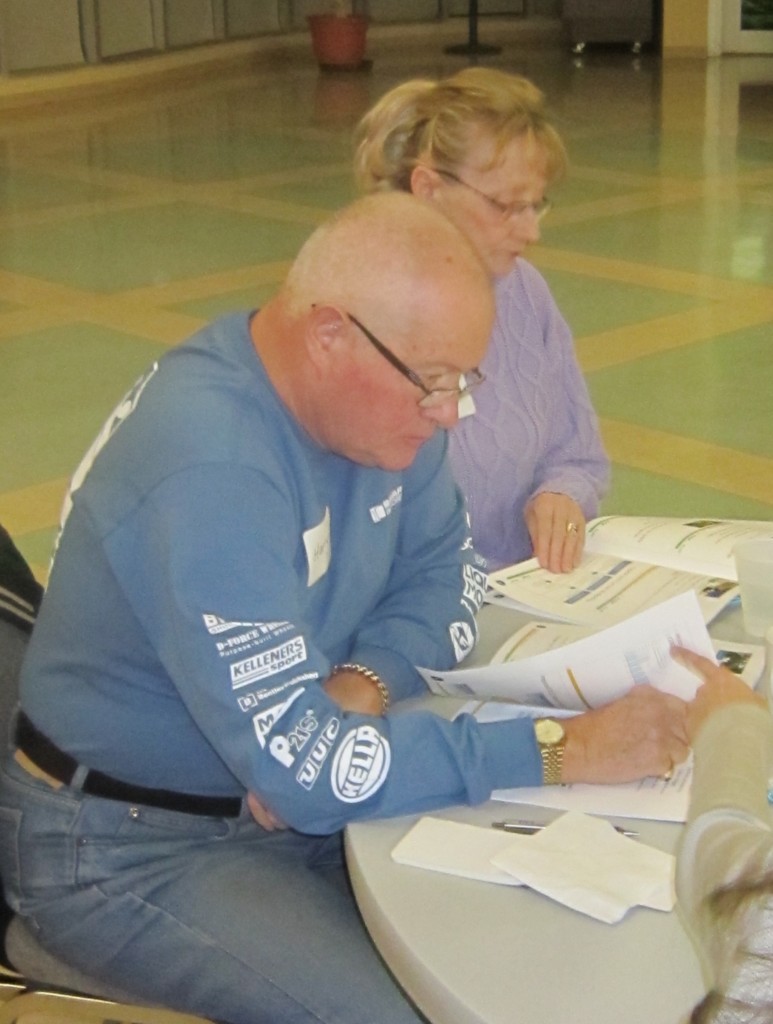 Burlington has always had a small group of citizens who get out to public meetings to review budgets, policy proposals and share ideas. In that regard we are fortunate. With the internet as our platform rather than a printing press there was an immediacy that allowed readers to respond. Because we were online and the contents of the newspaper were searchable readers could go back and check out what had been said or done months – even years before.
The ability for people to comment was important to us. Unfortunately, a lot of the comment is pretty juvenile, poorly stated and often nasty and mean.
We publish the name we are given. If there is a concern with the contents of a comment we will test the email address it was sent from. If invalid we frequently do not publish the comment.
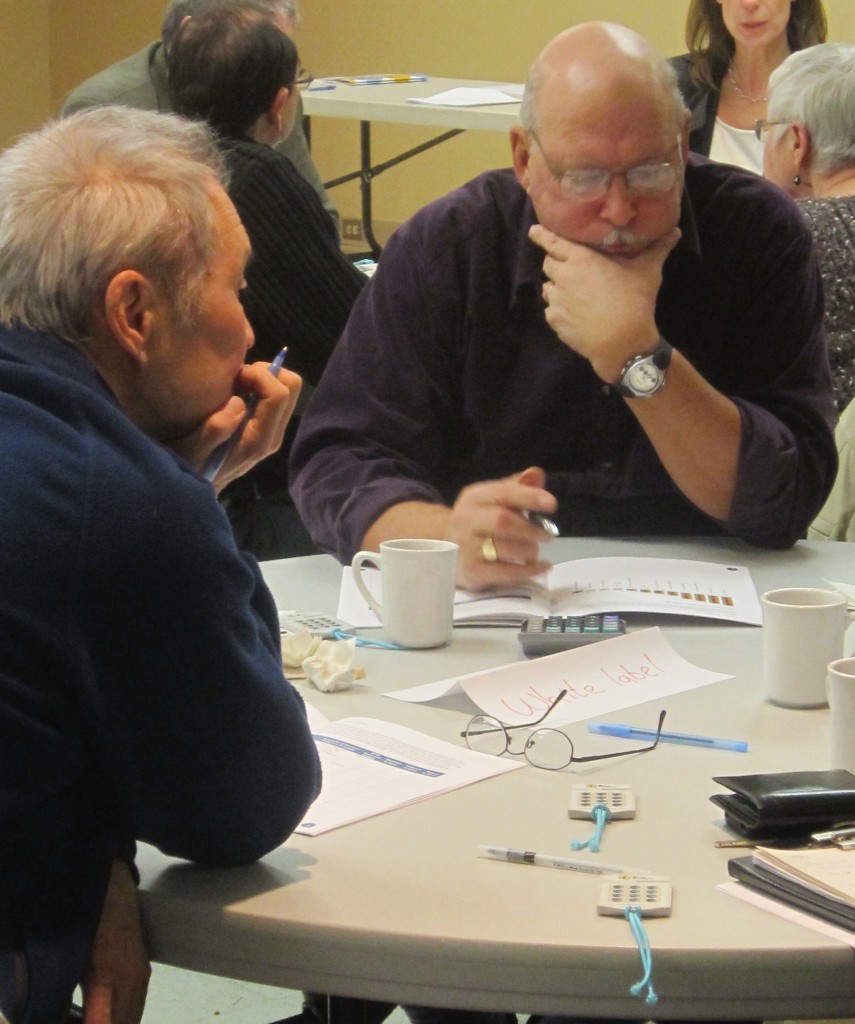 Intelligent people looking at the numbers and making their own decisions: democracy at its best. We frequently talk to the writer and on several occasions we have insisted on meeting with the author. Our objective is to create a forum where views are exchanged and the community at large is better for that exchange.
There have been some comments that were scurrilous, some with terribly foul language. Others have contained information that while not publishable are an insight into behaviour that bears watching.
From time to time we get a comment that represents what we set out to do ourselves. Comments made on the first person in Burlington to file nominations for the ward 1 seat in the October municipal election came in quickly. The comments made by one commentator in particular were informative and we felt useful. This is what we set out to do as a community newspaper – we commend these comments to you:
Rick Craven used to be an effective municipal leader. He listened to ideas, asked questions, worked hard to make a mark for Burlington. All under the great leadership and mentorship of Mayor MacIssac and a fantastic City Manager, Mr. Tim Dobbie. Then came the Cam Jackson era. Craven turned from an effective leader, and a team player, to a one man “lets battle the bully” show. He became a bully himself. He forgot how to be an effective leader, he lost the will to listen, all he wanted to do was fight.
 Burlington citizens discussing a draft of the city’s budget. Councillor Craven is on the right wearing the blue shirt. He’s never regained his better persona of a good leader, instead Craven enjoys continuing to be the bully. You see it at meetings of Council, in the media….. he just loves to bully delegates, others who have different opinions, and the member of council sitting to his left in Council Chambers. If it’s not a fight for him it’s not worth his time. His “my way or the highway” style has become totally ineffective.
Yes, Ms. Henshell, and many who will put their names forward to run in the 2014 election, may not have the political experience at the starting gate. You do have to learn to crawl, then walk, then run. However I’ll vote for emotional intelligence, a team player, and on the job training any day rather than 4 more years of watching a sarcastic, ineffective bully trying to make his, and “his only”, mark.
Mr. Craven has lost the personality it takes to be a good leader. He needs to learn to crawl again, and walk again before he should ever “run” again. It’s a seven member city council, not a one man show. He needs to be re-taught just that instead of continuing on with the selfish traits he once despised.
A break from Council Chambers would be in the best interest for Mr. Craven if he has any bigger political aspirations. Is he a politician…. yes. A great political leader… I beg to differ.
This kind of trenchant observation and the courage to speak is something we welcome and encourage.

|
|














































 After all that “heavy lifting” at the Standing Committees the budget will go to Council for approval on March 17th.
After all that “heavy lifting” at the Standing Committees the budget will go to Council for approval on March 17th.

 The first myth he wants to dispel is that non-profit groups are not using the Performing Arts Centre. “We have had more than 165 non-profit groups use the space.
The first myth he wants to dispel is that non-profit groups are not using the Performing Arts Centre. “We have had more than 165 non-profit groups use the space.
































